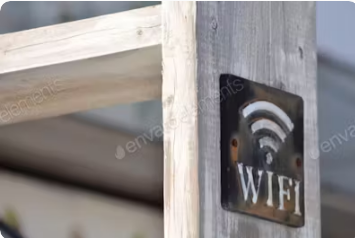Improving your Wi-Fi signal strength at home is essential for a seamless and reliable internet experience. Weak Wi-Fi signals can lead to slow speeds, dropped connections, and frustrating dead zones. To enhance your Wi-Fi signal strength and coverage, consider implementing the following strategies:
1. Optimal Router Placement: Position your Wi-Fi router in a central location within your home to ensure even coverage. Avoid placing it near walls, large furniture, or electronic devices that may interfere with the signal. Elevate the router to increase signal range and reduce obstructions.
2. Update Router Firmware: Regularly check for firmware updates for your router and install them to improve performance and security. Updated firmware often includes enhancements that can boost signal strength and optimize Wi-Fi connectivity.
3. Wi-Fi Channel Selection: Use a Wi-Fi analyzer tool to identify the least congested Wi-Fi channel in your area. Switch your router to the optimal channel to minimize interference and maximize signal strength. Many routers allow you to change channels through the router settings.
4. Use Quality Antennas: If your router has external antennas, ensure they are positioned vertically for better signal dispersion. Experiment with antenna angles to enhance coverage in different directions. Upgrading to high-gain antennas can also boost signal strength.
5. Wi-Fi Range Extenders or Mesh Systems: Consider using Wi-Fi range extenders or mesh systems to amplify and extend your Wi-Fi coverage. Range extenders rebroadcast the Wi-Fi signal, while mesh systems create a network of multiple nodes to ensure consistent coverage throughout your home.
6. Reduce Interference: Minimize signal interference by keeping electronic devices like microwaves, cordless phones, and Bluetooth devices away from the router. These devices can disrupt the Wi-Fi signal and degrade performance.
7. Wired Connections: For devices that require a stable and high-speed connection, consider using Ethernet cables for direct wired connections to the router. This can reduce congestion on the Wi-Fi network and improve overall performance for bandwidth-intensive activities.
8. Network Security: Ensure your Wi-Fi network is secure by using strong passwords and enabling encryption (WPA2/WPA3) to prevent unauthorized access. Limit the number of connected devices to optimize bandwidth and prevent network congestion.
By implementing these tips and optimizing your home Wi-Fi setup, you can significantly enhance your Wi-Fi signal strength and coverage. Experiment with different strategies to find the best solution that suits your specific home network environment and enjoy a robust and reliable internet connection throughout your living space.
